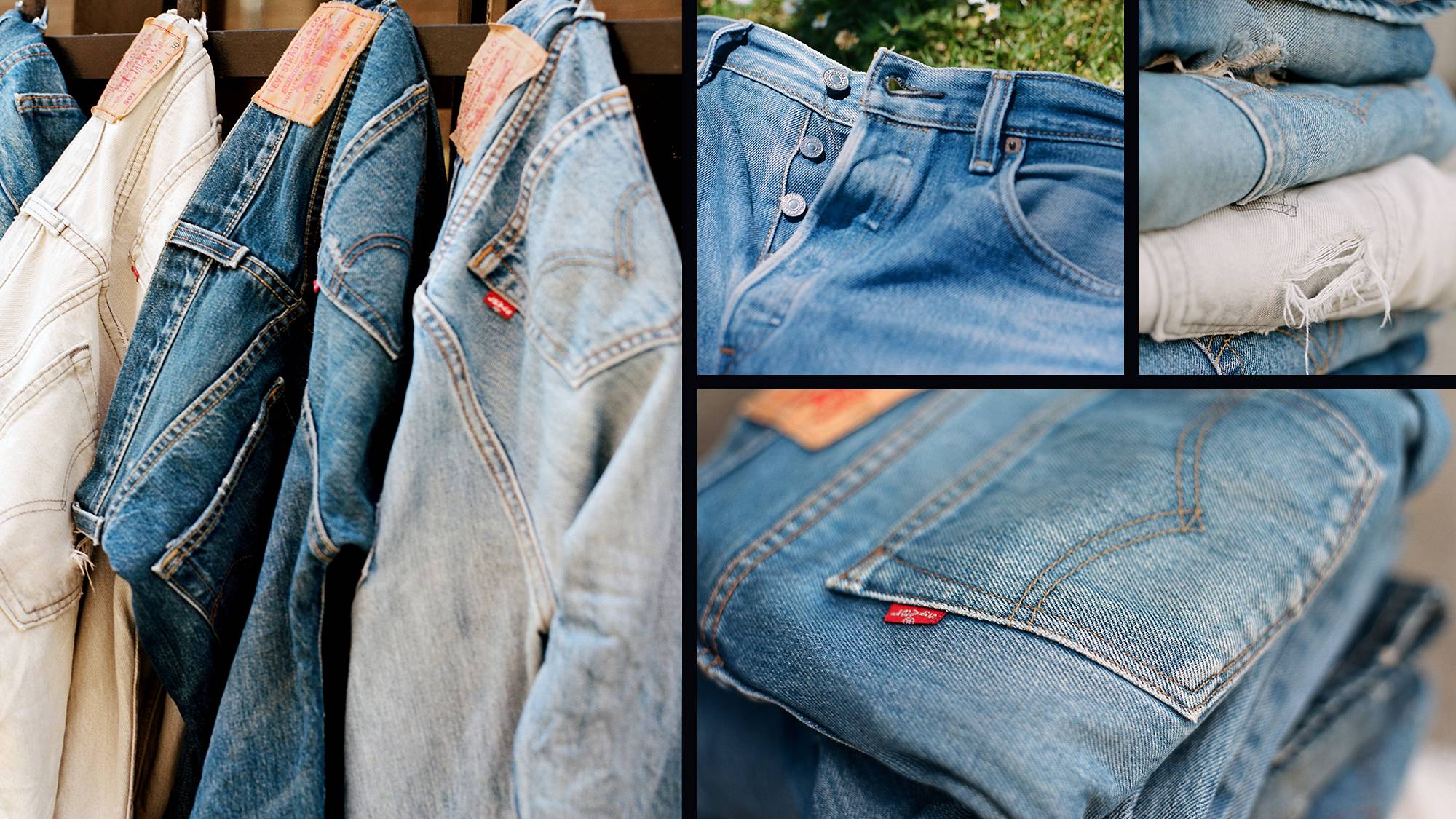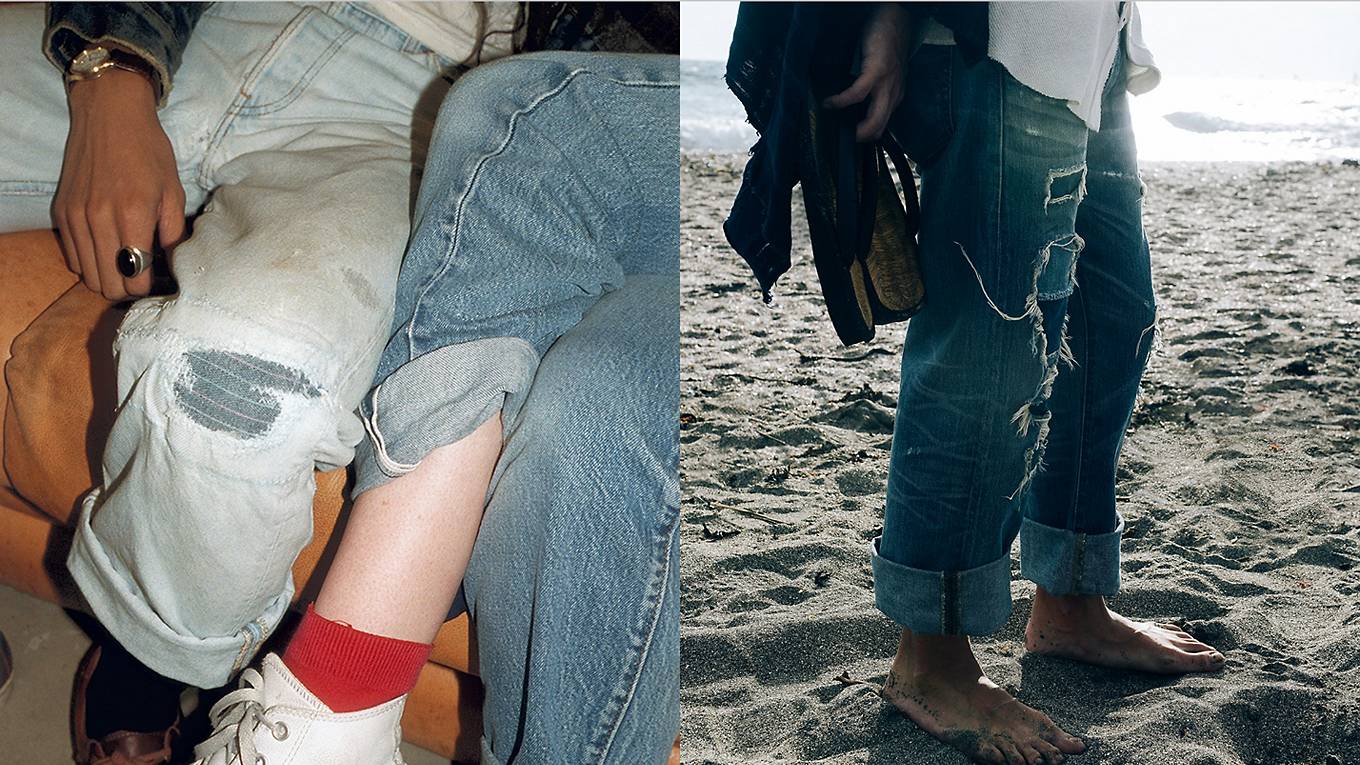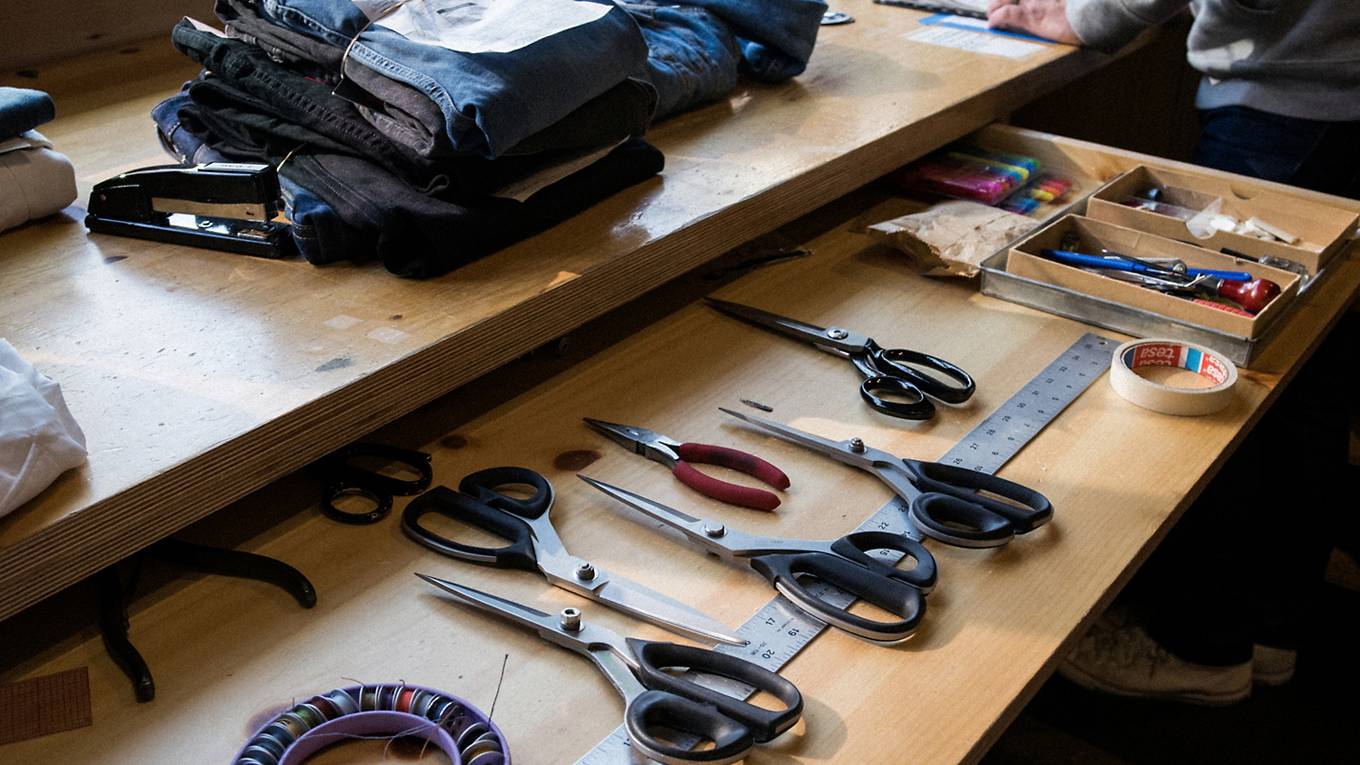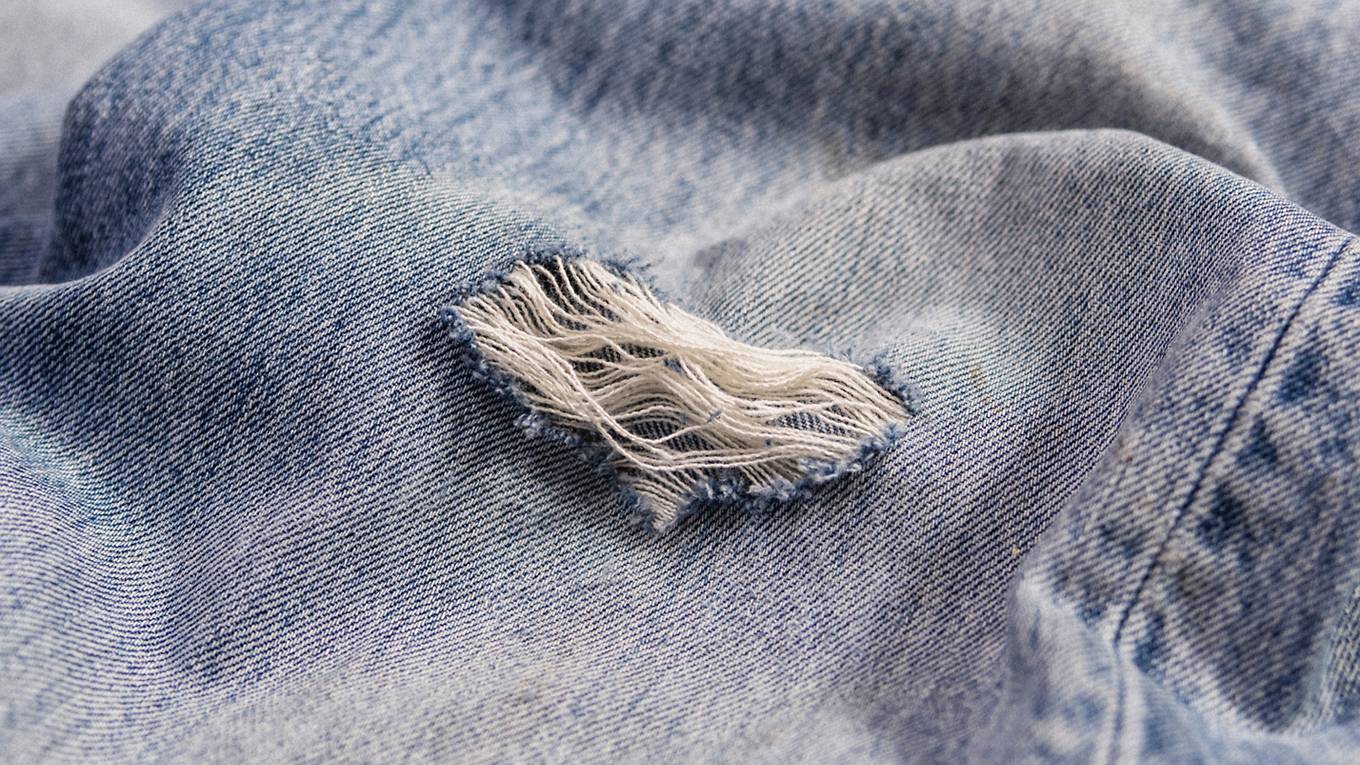How to Distress Jeans in 3 Easy Steps
Style /
October 2021

At Levi's®, we know that Quality Never Goes Out of Style®. So if you’re thinking of giving an old pair of jeans a DIY makeover, then why not try distressing them? Distressed denim is a timeless trend that looks amazing on anyone, and it’s a great way to elevate an outfit.
Buying consciously is important, so instead of buying a brand-new pair of distressed jeans, we love the idea of being able to customise a pair that you currently own. Besides, since these jeans have already been in your wardrobe for quite some time, you won’t have to worry about breaking them in. If old jeans no longer fit, you can always have a go at taking in the waist instead of throwing them out .
Our in-store tailors are happy to customise your jeans for you, but if you’re up for a fun DIY project, then here are some customisation tips from our tailors themselves to help you do it yourself at home.
What are distressed jeans?
Distressed jeans are jeans that have been manipulated to give them more of a vintage inspired look. Over time, jeans can become distressed naturally with frequent wear, or you can buy jeans that have been distressed through the manufacturing process. Alternatively, you can create this look yourself using our DIY approach.
Distressed denim appears raw and aged, and the white threads of the jeans will probably be visible. You can distress your denim based on personal preference, choosing how big to make the frays in your jeans, and how many to create.
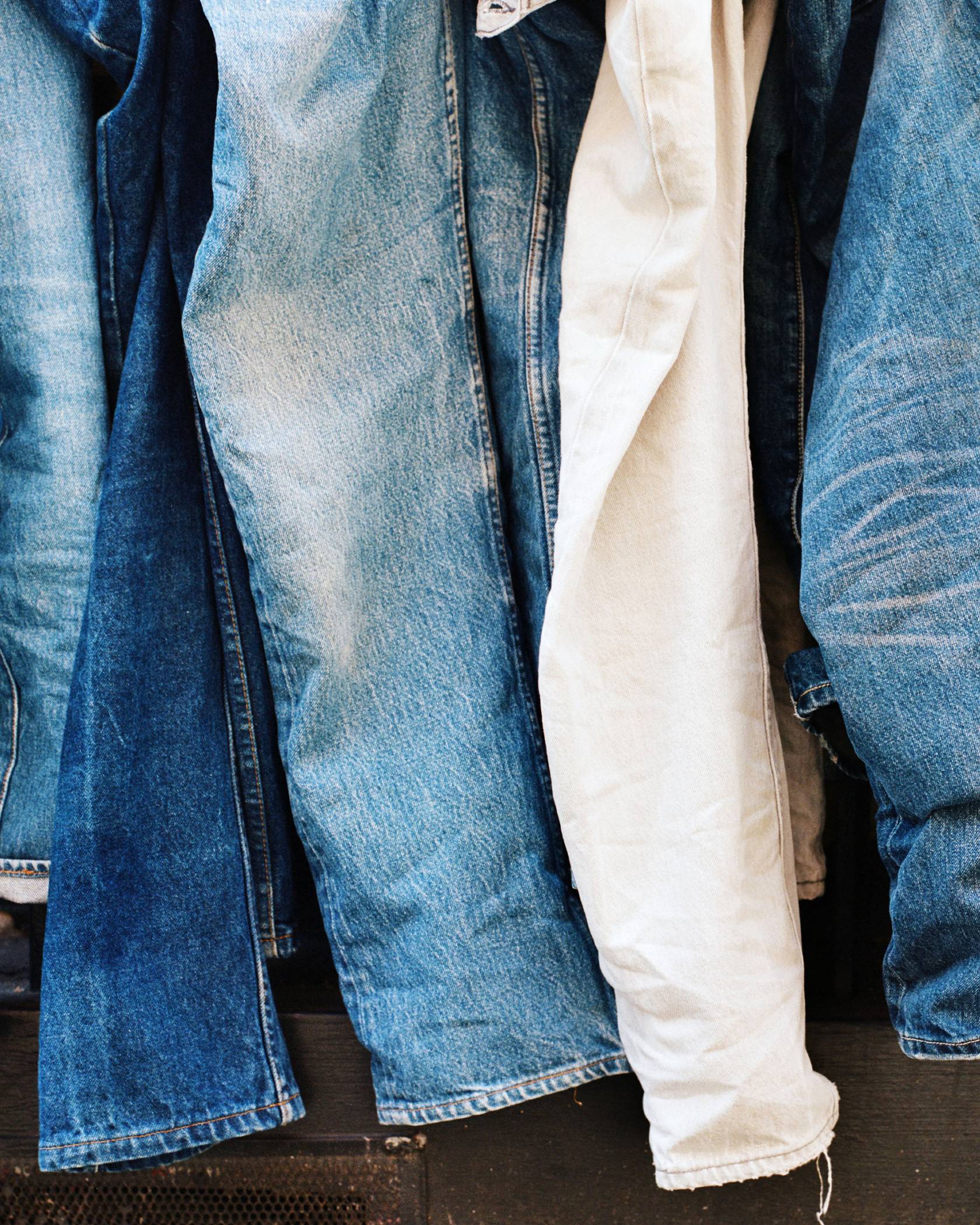
What is the difference between ripped and distressed jeans?
While they may appear similar, the notable difference between ripped and distressed jeans is the holes themselves. Both ripped and distressed jeans are caused by ripping the fabric, but the difference is that ripped jeans have obvious holes, while distressed jeans feature fraying, worn-out fabric where the holes would be.
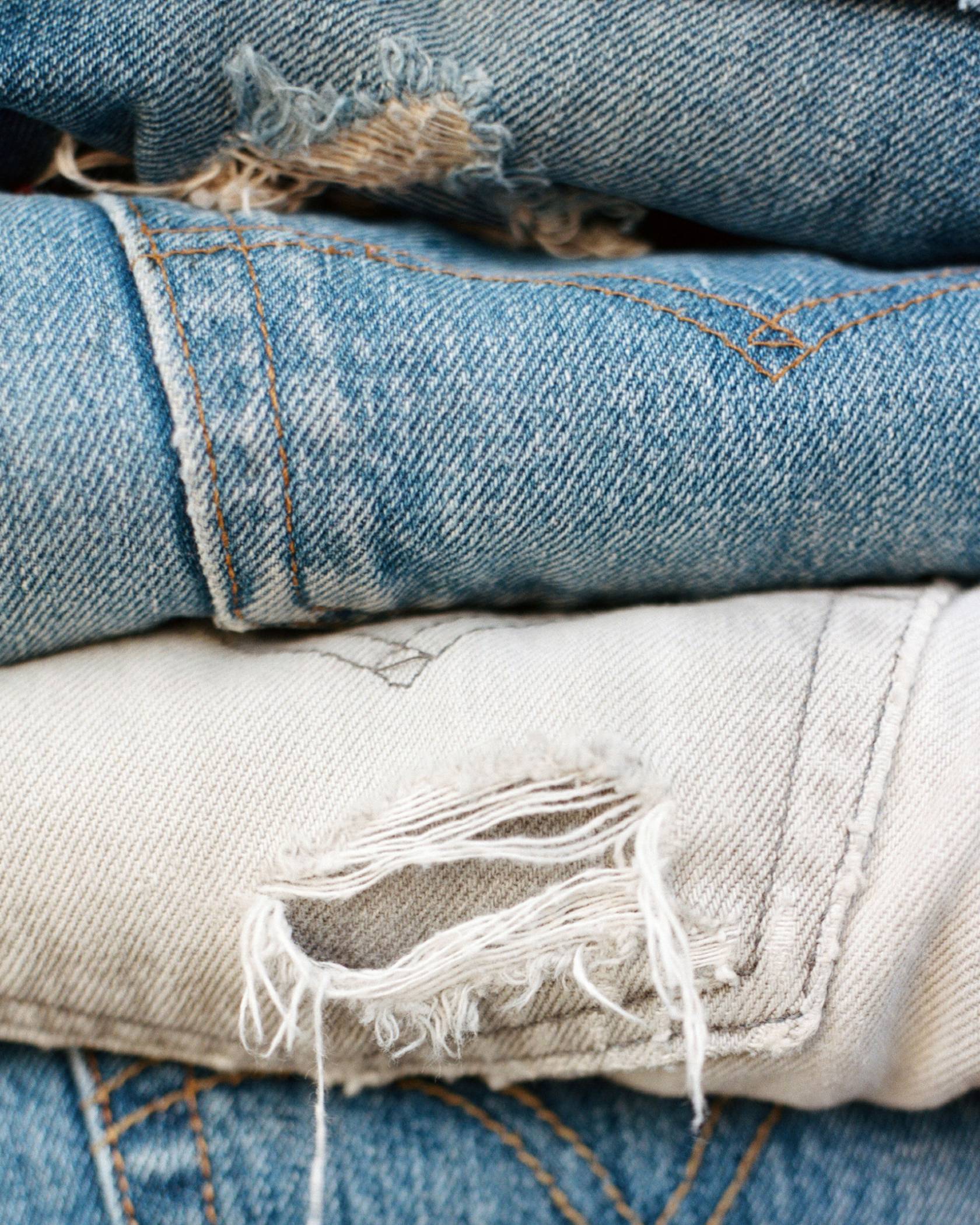
Are distressed jeans in style ?
Loose-fitting distressed jeans are a signature staple in many current wardrobes, with fashion influencers and celebrities leading the movement. They’re timeless when done right, and can give a new lease of life to denim you may not currently be getting much use out of. Since distressed jeans are currently in style, there’s never been a better time to have some fun with your own DIY distressing project.
Distressing your jeans also gives you the opportunity to show the world who you are. Levi’s are a blank canvas for self-expression, and we believe that by customising your denim, you can keep your most loved Levi’s unique and authentic to you. It’s a true act of teamwork that is started by us, finished by you.
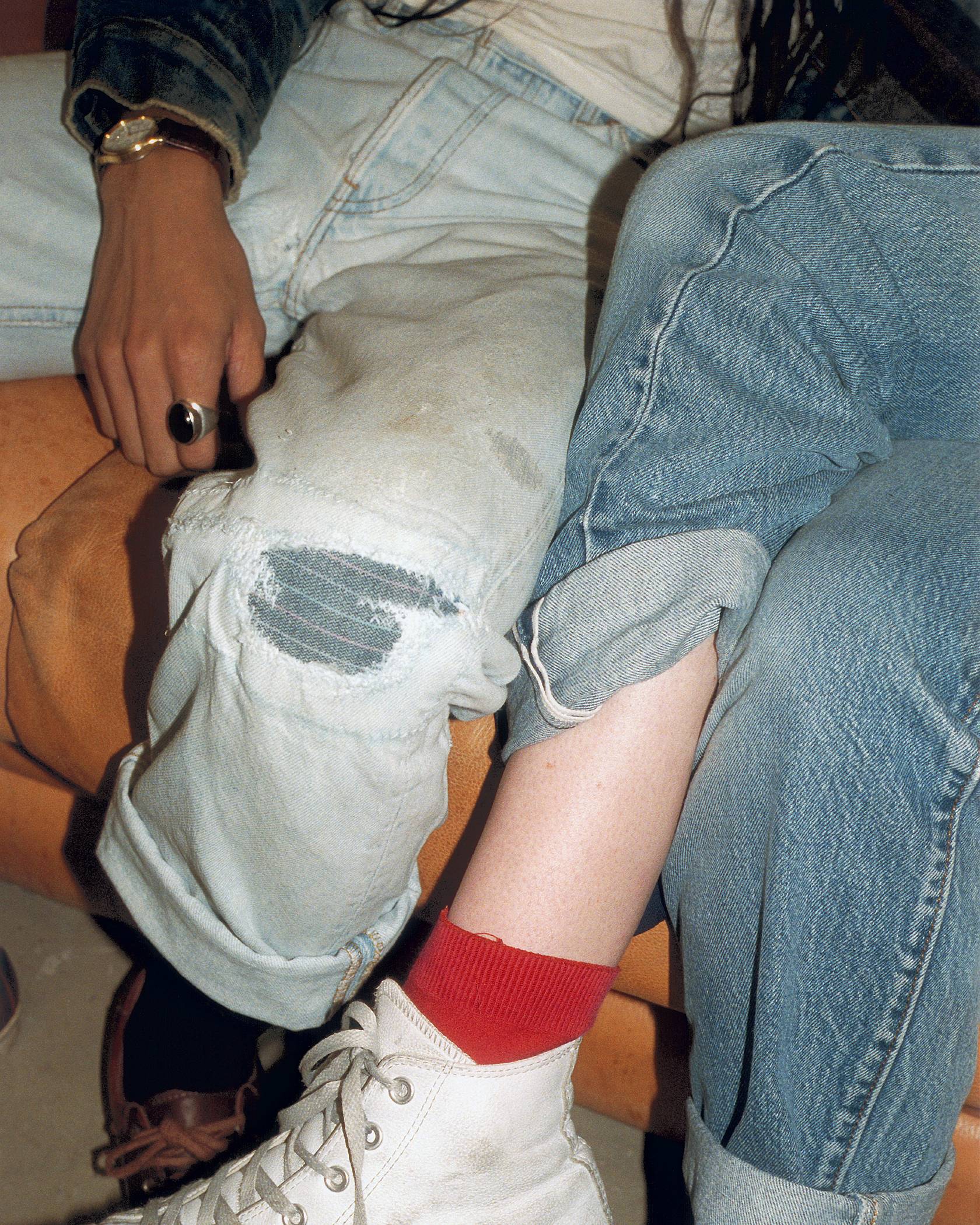
How to distress jeans
While our in-store tailors are always on hand to help you repair, reimagine and recycle, you don’t have to be a fully-fledged seamstress to distress your own jeans. It’s easier than you might think to get the distressed effect all by yourself.
There are two easy options for getting the job done: the sandpaper method, and the scissors and tweezers method. While using sandpaper to distress jeans creates more of a raw, vintage look, opting for the scissors and tweezers method is a little fiddlier, but gives you more control over the final result.
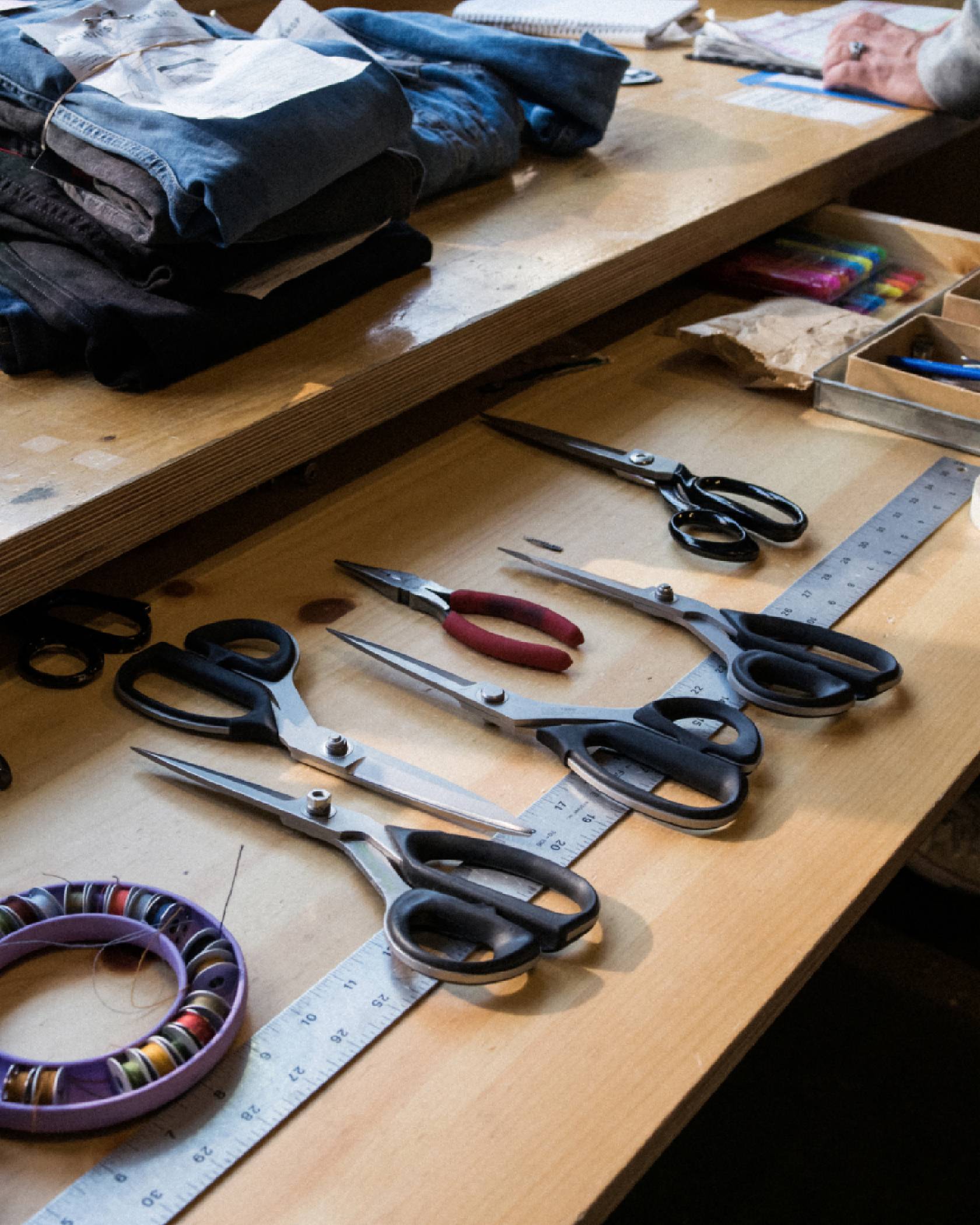
The scissors and tweezers method
WHAT YOU'LL NEED
- JEANS
- CHALK
- SCISSORS
- TWEEZERS
STEP ONE: MARKING
The first thing to do is choose the areas that you want to distress and mark three or four straight, horizontal lines a couple of inches above and below each other with your chalk. This gives you a good idea of which areas to focus on when you get stuck in. The lines can be as long or short as you want depending on how distressed you want your jeans to look.
You might choose to distress your jeans around the knees, at the ankles, or at the top near the pockets. Putting your jeans on while you mark them can help you see exactly where the lines are going to go.
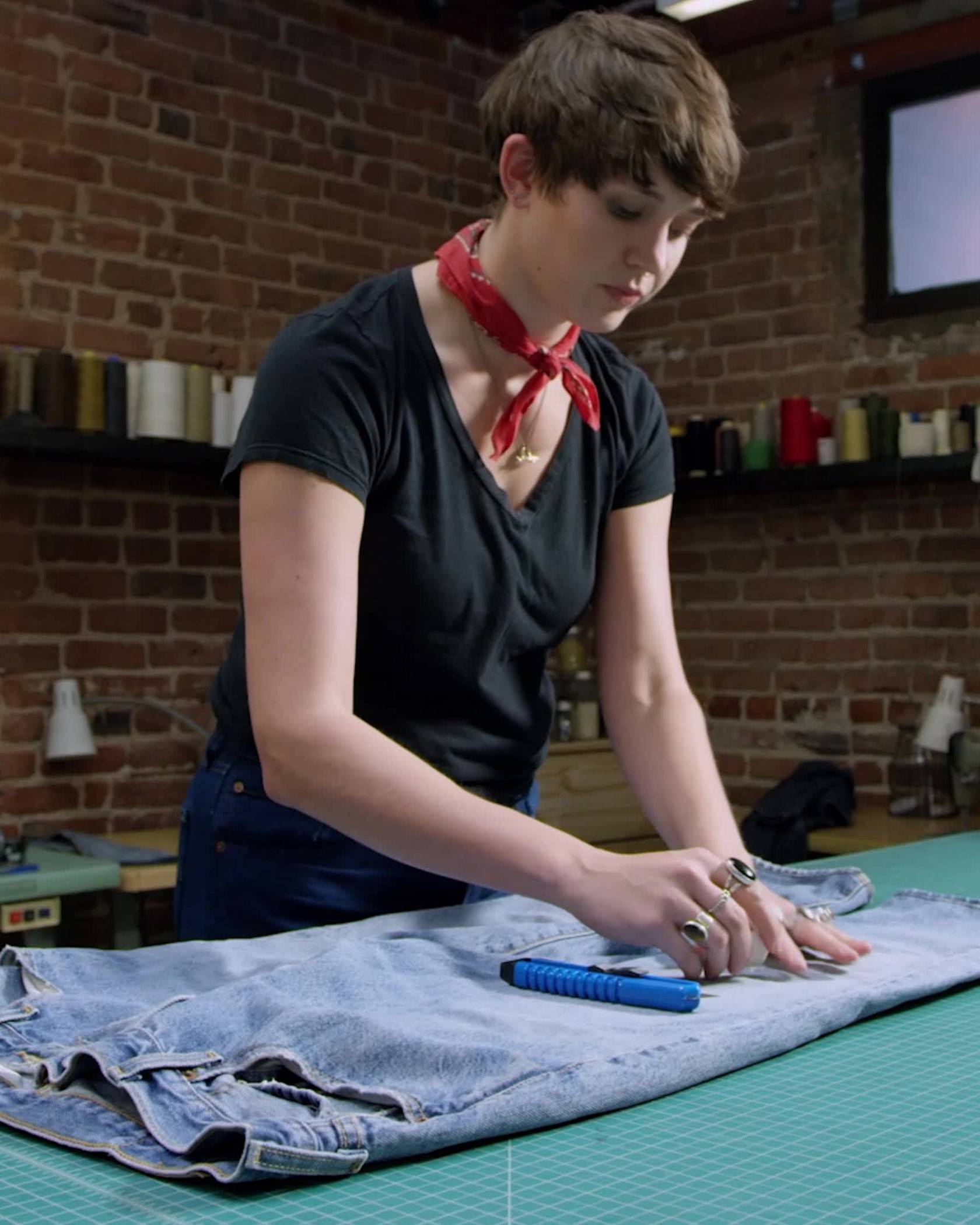
Step two: folding and cutting
Once you’ve marked out the areas you want to distress, it’s time for cutting. To make things as easy as possible, create a fold in the leg of the jeans that passes right through the middle of lines that you’ve created (you may have to keep making new folds for each different line). You can then create an even cut through each line.
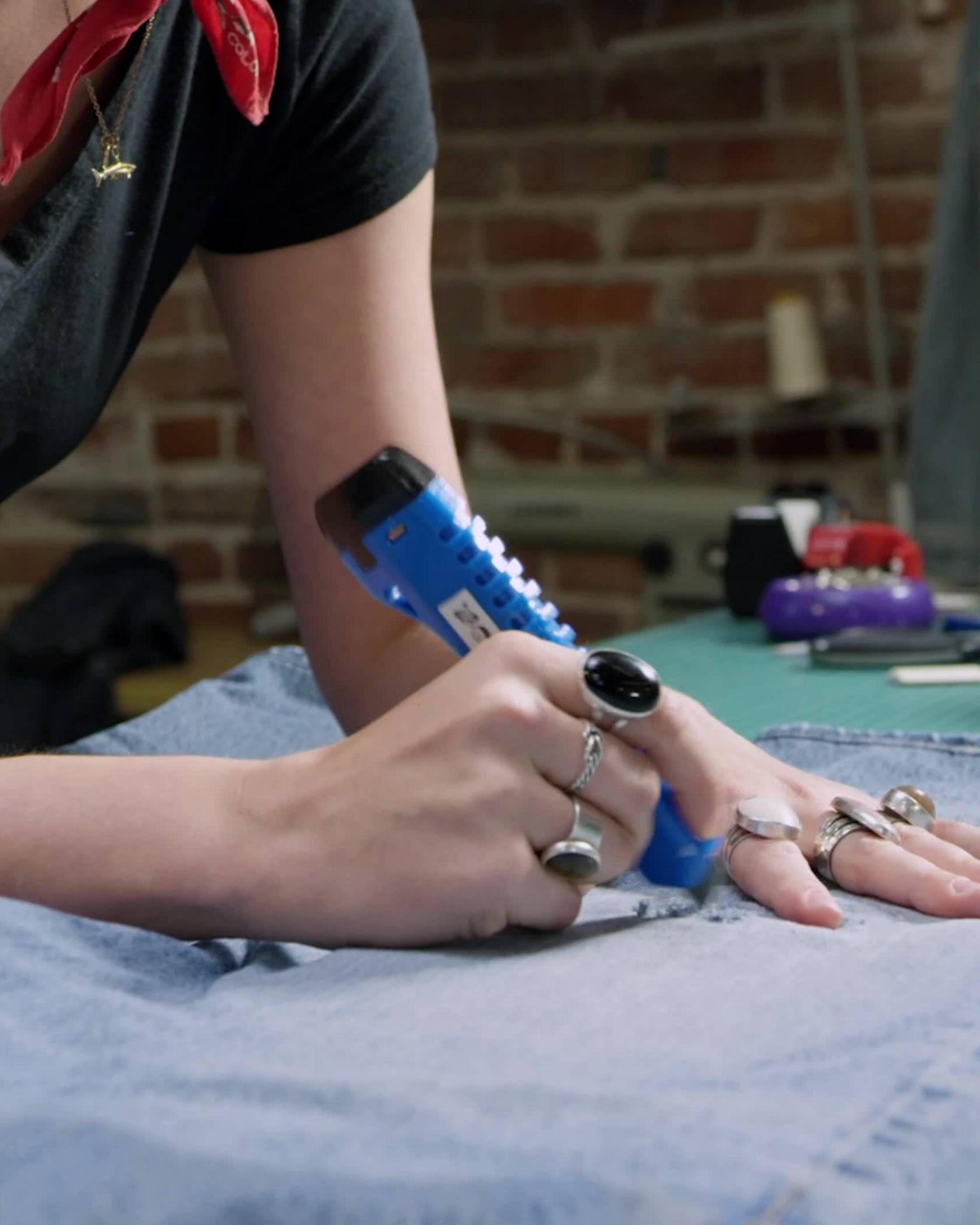
step three: time to distress
You should now be left with simple, clean rips in your jeans. To create the distressed look, grab your tweezers and begin pulling at the blue threads that are hanging down under each section of cut fabric.
When distressing your jeans, the aim is to get rid of the blue threads and leave only the white on show. It’s worth noting that all of the blue fibres run vertically down the trousers, and the white run horizontally—so you want to be pulling downwards, not across.
Continue until you’ve pulled out all the blue threads from under each cut, though try not to remove any of the white ones, as this will leave you with a hole!
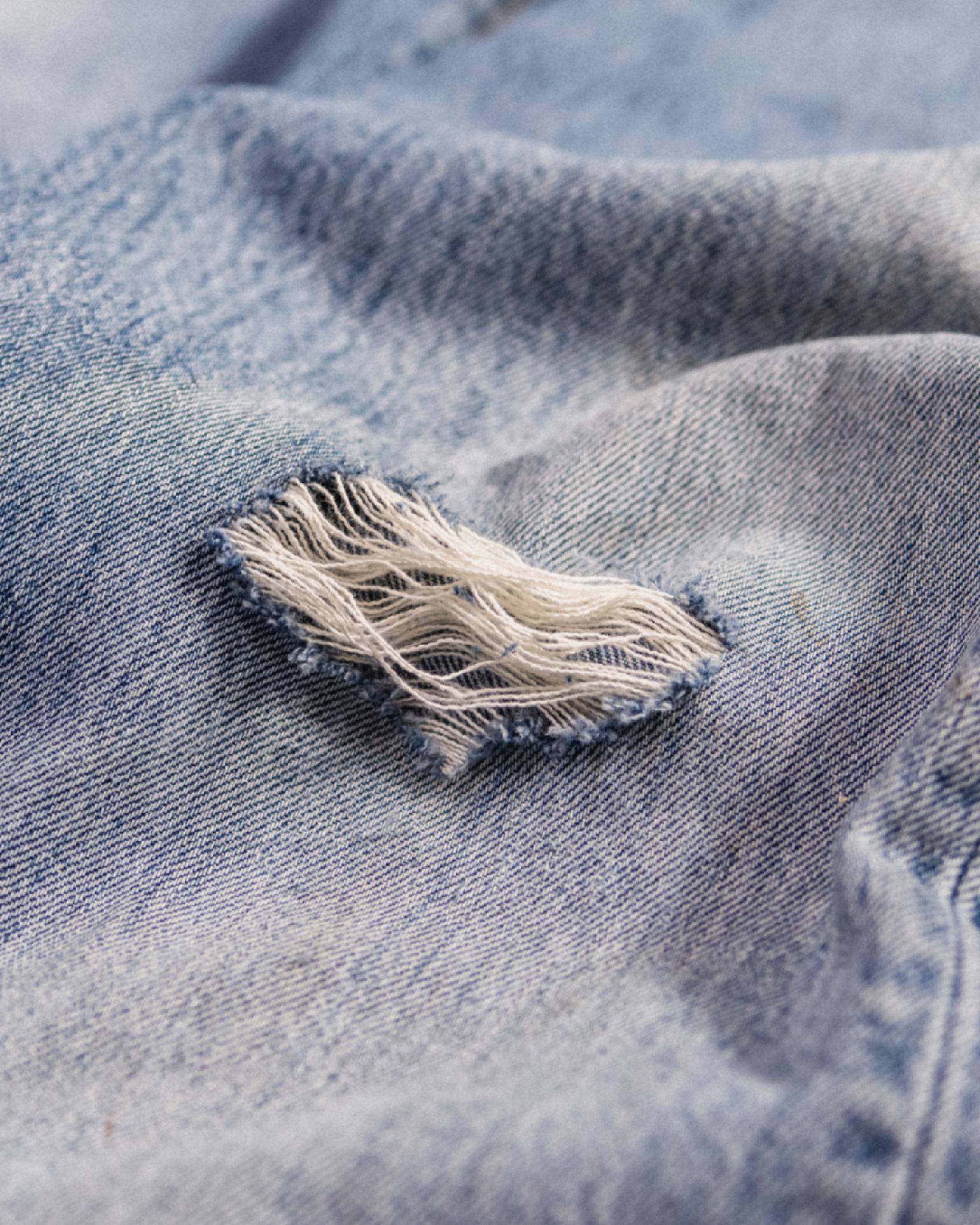
The sandpaper method
WHAT YOU'LL NEED
- JEANS
- SANDPAPER
Step one: choose the areas to distress
Distress jeans easily using the sandpaper technique. Similar to the first method, you’ll begin by choosing the areas that you want to distress,- however, since this approach isn’t as precise, you don’t need to worry about marking your fabric with chalk.
Step two: Rubbing
Take your sandpaper and begin rubbing it back and forth over the area of your jeans that you want to distress. Try to keep your sandpaper in the same spot so that you don’t end up damaging the threads in other areas that you want to remain intact.
As the blue threads come away, be sure to brush them to the side so you can clearly see the progress you’re making. Remember, the aim is to be able to see the white threads, not to get rid of them completely! It’s very easy to get carried away with the sandpaper method, so make sure you stop and assess the situation every couple of seconds.
Step three: wash your jeans
While we don’t recommend washing jeans often, since they simply don’t need it, after you’ve distressed your jeans, they can often look quite ‘clean’ and deliberate until they’ve been washed. Once the jeans have come out of the washing machine, they should have more of the fuzzy, vintage look that you’re after .
Do right by the planet by washing your jeans at a low temperature, or go one step further and put your jeans on a cold wash. The cold water will help to keep the colour you love while saving energy and money.
Once your jeans are washed, avoid putting them in the dryer and go for a more environmentally friendly option, hanging your jeans to let them dry naturally.
